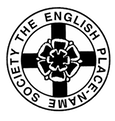Fotherby
Major Settlement in the Parish of Fotherby
Historical Forms
- Fodrebi 1086 DB
- Foderby 1242–43 Fees 1288 Ass 1295 RSu l13 Percy 14 DCAcct 1304 Banco 1328 Cl 1343 FA 1346 Cl 1394 FA 1428 Pat 1551
- Foderbe 1519 DVi
- Fodderby 1343 Ipm
- Fotrebi c.1115 LS a1184 Gilb 1409
- Fotreby lHy2 1409 RAiv c.1200 Pat 1227 Cl 1260 FF 1272 Orig 1287,1288 LPxi 1536
- Fottrebi c.1200 RAiv
- Foterby Hy2 Dugdvi Hy2,a1170,1180–90,a1184(1409) Gilb 1210–15 RAiv eHy3 Ch 1291 RAiv a1224 Fees 1242–43 FF 1250 RAiv 1250 ValNor 1254 FF 1256 RAiv 1261,1266,1268,1269 FF 1269 Ass 1272 RH 1276 Ass 1287 Tax 1291 Ass 1295 Pat 1297 HarlCh 1297 Ass 1298 FA 1303 IBL 1495
- Foterbi Hy2 Dane l12 RAiv 1202 Ass 1210–20 RAiv 1219 FF 1212 Fees 1239–50 RAiv
- Foterbia 1212 Fees
- Foterebi 1202 Ass 1207 Cur
- Fotirby 1343 NI
- Fotterby 1231 FF 1271 RRGr 1526 Sub
- Fothrebi 1207 Cur
- Fotherby 1272 Ass 1343 Ipm m14 AD 1373,1374 Peace 1538–39 Dugdvi 1548,1552 Pat 1579 Terrier 1610 Speed 1672 DCLB
- Fotherbie 1509 Willsi 1557 InstBen a1567 LNQv 1563 InstBen 1576 LER 1601 Terrier 1605 DCLB
- Fotherbye 1535 VEiv 1554 Pat 1576 Saxton 1588 DCLB 1606,1611 Terrier
Etymology
Ekwall (DEPN s.n.) states that this is “OScand Fōtar -bȳr 'Fōt's BY'. ON Fótr had the gen. Fótar by the side of Fóts. ” The gen.sg. Fóts certainly occurs in Foston Kest and Fosdyke Holland, besides Foston, PN Db 560, Lei, DEPN, and PN YE 91.Fellows-Jensen, SSNEM 47, points out that Fótar is not found in any of the instances of the pers.n. quoted in Lind. The gen.sg. Fóts - certainly occurs in these names, even though the gen.sg. -ar is “normal for the appellative fótr m. 'foot'.” She suggests as an alternative explanation that the first el. is OE fōðer 'cartload, fodder' or the cognate Scand fóðr . Lind only records ON Fótr as a byname (LindB 89) from the medieval period, so that it is difficult to see how the (rare) gen. forms in fotz -, fots - noted here can be of decisive relevance for the first el. of Fotherby.Fellows-Jensen is aware of the fact that it is difficult to explain the numerous early forms in Foter -, Fotre - as being from fōðer , fóðr , and tentatively suggests a third alternative, that we are perhaps concerned with the appellative fótr 'foot', used in some topographical sense referring to the site of Fotherby at the foot of the Wolds. She considers that this “would account for the occurrence of the primary gen. Fótar - in this name, while the p.ns. containing the by.n. Fótr have the secondary gen. Fóts -”. It is difficult to see what the topographical application of 'the bȳ of the foot' might be, for a number of villages along the same line here could well be so described. In fact, as Dr Insley points out, the problem is more apparent than real. The early OWScand gen.sg. of fótr was indeed fótar , but this was replaced in medieval byname forms by fóts (A. Noreen, Altisländische u. altnorwegische Grammatik , 4. Aufl., Halle, 1923, Paragraph 414, Amn. Noreen contrasts later uxafóts with early þyrnefótar ). In Danish, fōts is usual, and is the original form, for the West Scandinavian fótar evolved through analogy with the u - and o - declensions, as Dr Insley notes. Gen.sg. Fótar - in Fotherby is therefore a specifically West Scandinavian form, while Fóts - in Foston is the usual Danish form. Given these considerations, there are no obstacles to interpreting Fotherby as 'Fōt's farm, village', v. bȳ .

